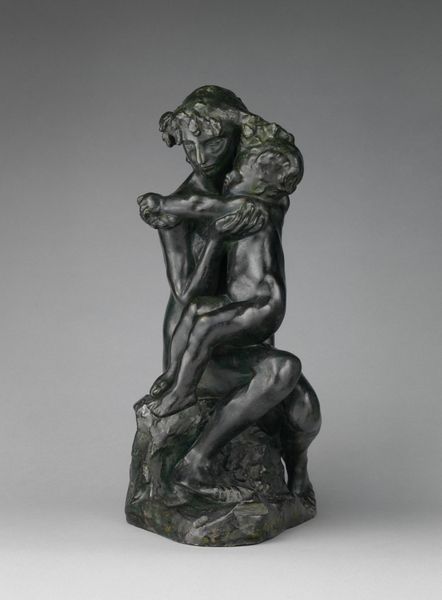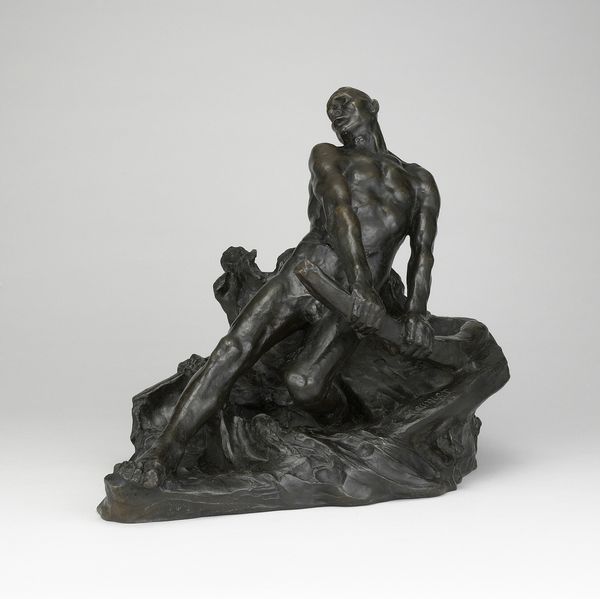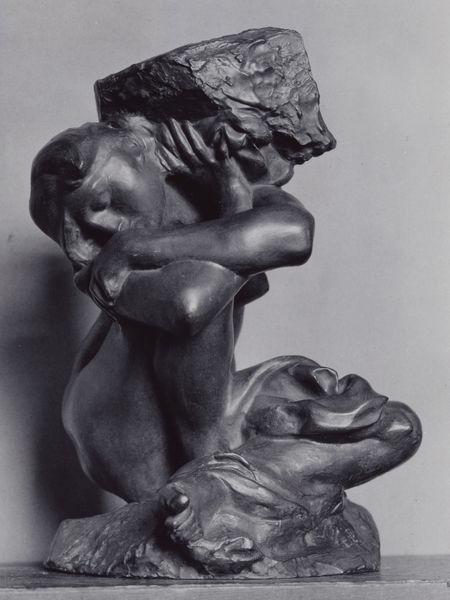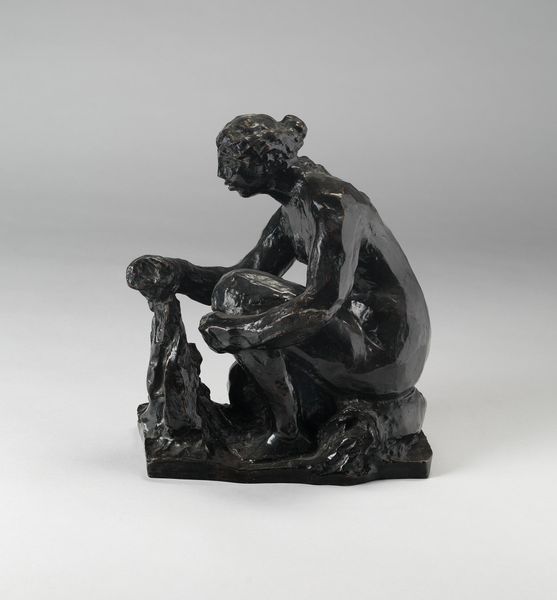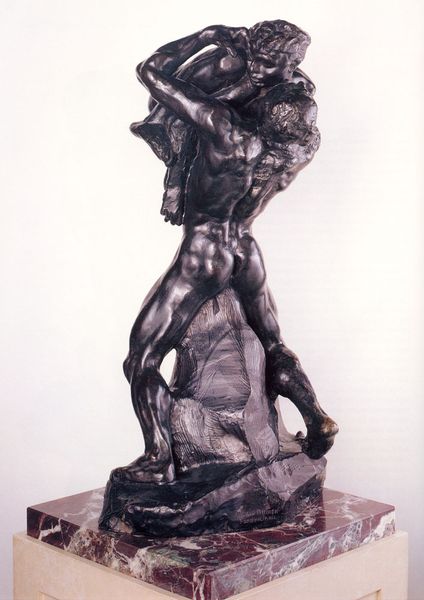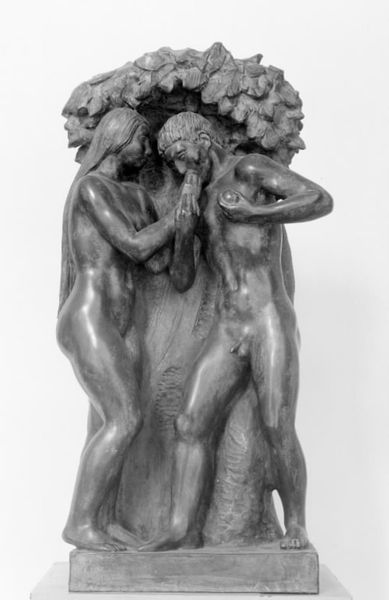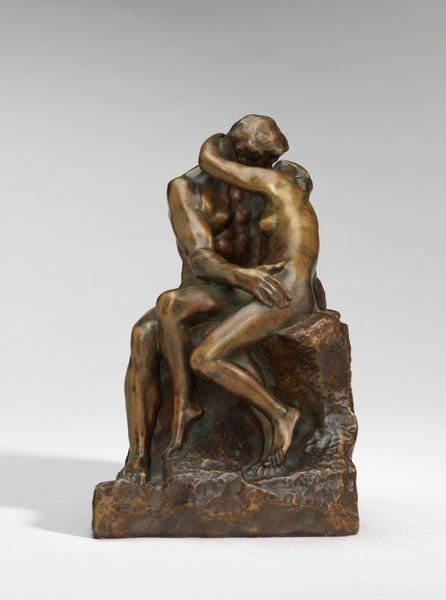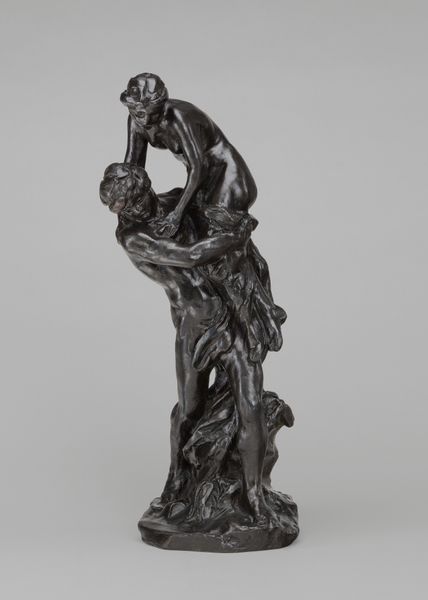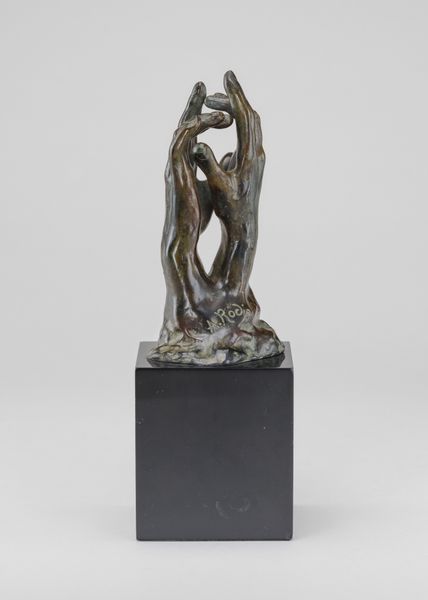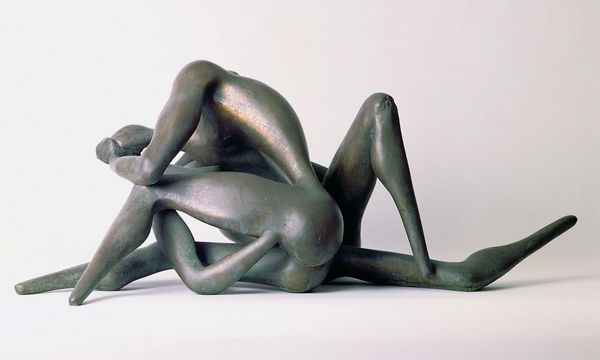
Copyright: Public domain
Editor: Here we have Auguste Rodin’s bronze sculpture *Ugolino*, created in 1882. It’s… intensely despairing, a jumble of limbs and suffering. What do you see in this piece? Curator: It’s impossible to ignore the raw emotion. But let's consider the sculpture’s source, Dante’s *Inferno*. Ugolino, imprisoned with his sons, faces starvation. Rodin isn't just illustrating a scene; he's exploring the limits of human endurance under extreme oppression. Editor: So, it’s about more than just a literal depiction of a terrible story? Curator: Exactly. Think about Rodin’s social context. The late 19th century was a time of massive social upheaval, industrialization, and questions of human worth. How does Rodin use the male nude, historically a symbol of heroism, to depict such abject misery and loss of agency? Is this a critique of power? Editor: That makes me see it differently. The figures aren't idealized; they're gaunt, almost skeletal. It challenges the traditional heroic nude. Curator: Precisely! Rodin's radical realism, depicting human fragility rather than strength, served as a form of social commentary, almost a revolt against the academic expectations. What does it say that even in the face of unimaginable horror, kinship, though tortured, endures? What political implications are possible in viewing it? Editor: I hadn't considered it as a political statement. I was focused on the personal tragedy. Curator: Rodin compels us to confront uncomfortable truths about human nature and the impact of social forces on the individual. Hopefully now you can approach the sculpture and understand not just Rodin's technical prowess but the work's embedded critique and plea for social consciousness. Editor: I see it with fresh eyes now; thank you for shedding light on those layers.
Comments
No comments
Be the first to comment and join the conversation on the ultimate creative platform.
